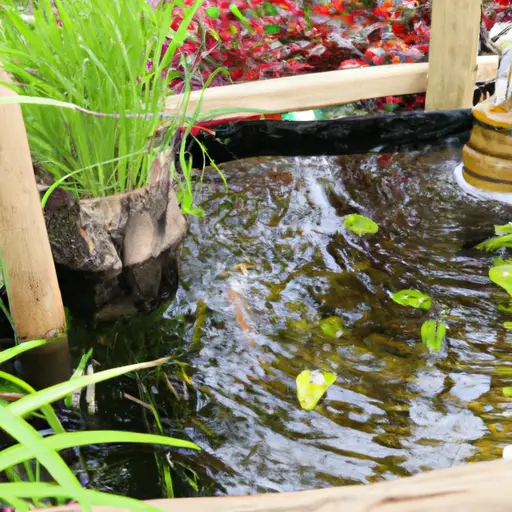Container gardens are a popular choice for those who want to bring the beauty of nature into limited spaces such as balconies, patios, or even small indoor areas. While traditional container gardens typically include flowers or vegetables, incorporating water features and aquatic plants can take your gardening experience to a whole new level. Not only do water features provide a soothing ambiance, but aquatic plants also add a unique touch of elegance to the overall aesthetic. Let’s explore the world of incorporating water features and aquatic plants into container gardens.
Water features come in various sizes and shapes, making them versatile additions to any container garden. From small tabletop fountains to larger bubbling rocks or cascading waterfalls, these elements can transform an ordinary garden into a serene oasis. The sound of gently flowing water can create a calm and relaxing atmosphere, perfect for unwinding after a long day or enjoying peaceful moments outdoors.
When it comes to choosing aquatic plants for your container garden, you have an incredible range of options. Water lilies are one of the most popular choices due to their stunning flowers and floating leaves that create an eye-catching display. Lotus flowers are another exquisite choice with their striking blooms that add elegance and drama to any space. Other options include floating plants like duckweed or water lettuce, which provide shade for fish if you decide to incorporate them into your container garden.
To successfully incorporate water features and aquatic plants into your container garden, there are a few key considerations you should keep in mind.
Firstly, it is important to choose the right container size and depth for both the water feature and aquatic plants. Larger containers allow for more creativity with design options while also providing ample space for plant growth. Additionally, deeper containers allow aquatic plants to establish healthy root systems and thrive.
Secondly, ensure proper placement of your container garden in terms of sun exposure. Most aquatic plants require at least six hours of direct sunlight per day to flourish. Placing your containers in the right location will promote healthy growth and vibrant blooms.
Next, carefully select the appropriate soil or growing medium for your aquatic plants. Specialized aquatic plant soil or loam-based compost mixed with sand is ideal for water plants as they provide the necessary nutrients while allowing for proper drainage. It’s essential to avoid using regular potting soil as it may become waterlogged, leading to root rot.
Maintaining a balanced ecosystem is crucial when including fish in your container garden. Fish can help control pests and add vitality to your water feature by their graceful movements. However, it’s vital to ensure the proper balance of fish and plants, as excessive feeding can lead to an excess of nutrients that encourage algae growth. Adding a small pump or filter system can also help keep the water clear and reduce maintenance requirements.
Regular maintenance is essential for the longevity and beauty of your container garden. Pruning dead leaves, fertilizing as needed, and monitoring water levels are important tasks to keep your aquatic plants healthy. Additionally, keeping an eye out for any signs of pests or diseases will ensure a thriving garden.
Incorporating water features and aquatic plants into container gardens is a creative way to enhance your outdoor or indoor spaces. Not only do they add aesthetic appeal, but they also provide a peaceful ambiance that promotes relaxation. With careful planning and consideration of space, light exposure, soil requirements, and maintenance needs, you can create a captivating oasis right in your own home. So why not bring the soothing qualities of water into your container garden and enjoy the wonders of aquatic life?













